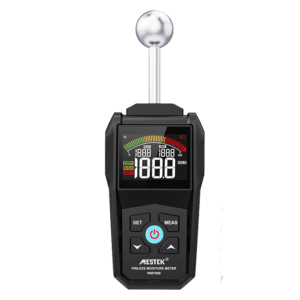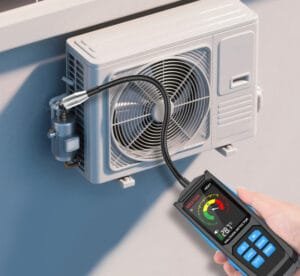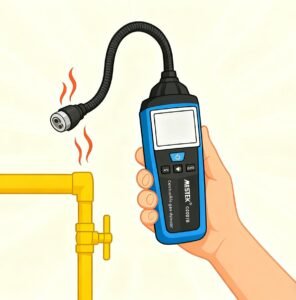Noise is everywhere—and excessive noise can impact productivity, health, and even safety. That’s where a sound level meter comes in handy. A sound level meter is a sound measuring instrument that quantifies sound pressure levels in decibels (dB). Professionals use it to evaluate workplace noise, environmental noise pollution, and audio system performance. Whether you’re an engineer, building inspector, or audio enthusiast, understanding how this noise measuring instrument works is the first step to accurate sound measurement.
What Is a Sound Level Meter Used For?
A sound level meter serves as a noise measuring instrument across multiple industries:
Occupational Safety – Ensures workers are not exposed to harmful noise levels in factories or construction sites.
Environmental Monitoring – Measures traffic, airport, or industrial noise that may impact nearby communities.
Audio System Testing – Optimizes speaker setups in theaters, studios, or event venues for balanced sound.
Building Acoustics – Identifies areas with poor insulation or excessive noise leakage.
In simple terms, this sound measuring device translates the invisible pressure of sound waves into numbers that you can analyze and act upon.
How Does a Sound Level Meter Work?
A digital sound level meter works by capturing sound waves and converting them into electrical signals. The process involves:
- Microphone Capture – The microphone senses sound pressure in the air.
- Signal Conversion – An internal circuit converts the acoustic energy to an electrical signal.
- Weighting and Time Filtering – Filters adjust the reading based on human hearing sensitivity.
- Display Output – The processed value is shown in decibels (dB) on the screen.
Modern digital sound level meter like the MESTEK SL750B feature AC-weighting, fast/slow response settings, and data hold functions, making field measurement faster and more reliable.
Time Weighting in Sound Measurement
Time weighting refers to how quickly the level meter responds to changes in noise levels. There are two common settings:
- Fast (F / 125ms) – Captures quick sound fluctuations; ideal for machinery or sudden noise.
- Slow (S / 1000ms) – Averages out fluctuations; useful for steady environmental noise.
Selecting the correct time weighting ensures that your measurements match the type of noise you are analyzing.
Tips: Selecting the correct time weighting ensures that your measurements match the type of noise you are analyzing.
Frequency Weighting Explained
Not all sound frequencies are equally harmful or noticeable to humans. Frequency weighting is applied to adjust measurements to better reflect perceived loudness.
A-Weighting (dBA)
- Mimics the human ear’s sensitivity.
- Best for workplace noise or general environmental studies.
C-Weighting (dBC)
- Less filtered, captures low-frequency noise.
- Useful for measuring machinery or bass-heavy sounds.
Z-Weighting (dBZ)
- Flat response across the entire range.
- Preferred for professional acoustic analysis.
A/C Dual Weighting
- Provides both human-perceived and low-frequency impact data, which is why many modern digital sound level meters support this mode.
Frequency Analysis for Noise Measuring Instruments
Frequency analysis allows users to identify which frequencies dominate the environment. For example:
- Low Frequencies (20–200Hz): HVAC systems, heavy vehicles
- Mid Frequencies (200–2,000Hz): Human speech, general machinery
- High Frequencies (2kHz+): Whistles, alarms, high-speed tools
Professional engineers often rely on frequency analysis to design noise control solutions or verify building acoustics.
Sound Level Meter Display And Reading

Modern sound measuring devices provide real-time data through:
- 4-digit LCD display for precise readings (resolution 0.1dB)
- Data hold to freeze readings for recording
- Auto-ranging to switch between low (<100dB) and high (>100dB) sound levels
The MESTEK SL750B incorporates all these features, making it ideal for home, office, or basic industrial monitoring without excessive complexity.
Calibration of a Sound Level Meter
Accurate measurement depends on regular calibration:
Field Calibration – Using a portable calibrator before measurement sessions.
Factory Calibration – Recommended annually to maintain accuracy within ±2dB.
Conclusion
Whether you are monitoring environmental noise, workplace safety, or home acoustics, a reliable noise measuring instrument ensures that your decisions are based on accurate data.
If you’re starting your journey in sound measurement, consider a digital sound level meter like the MESTEK SL750B—compact, accurate, and designed for everyday use.






